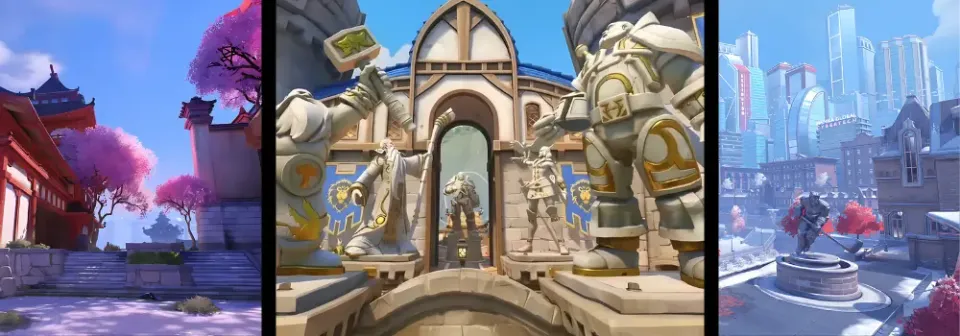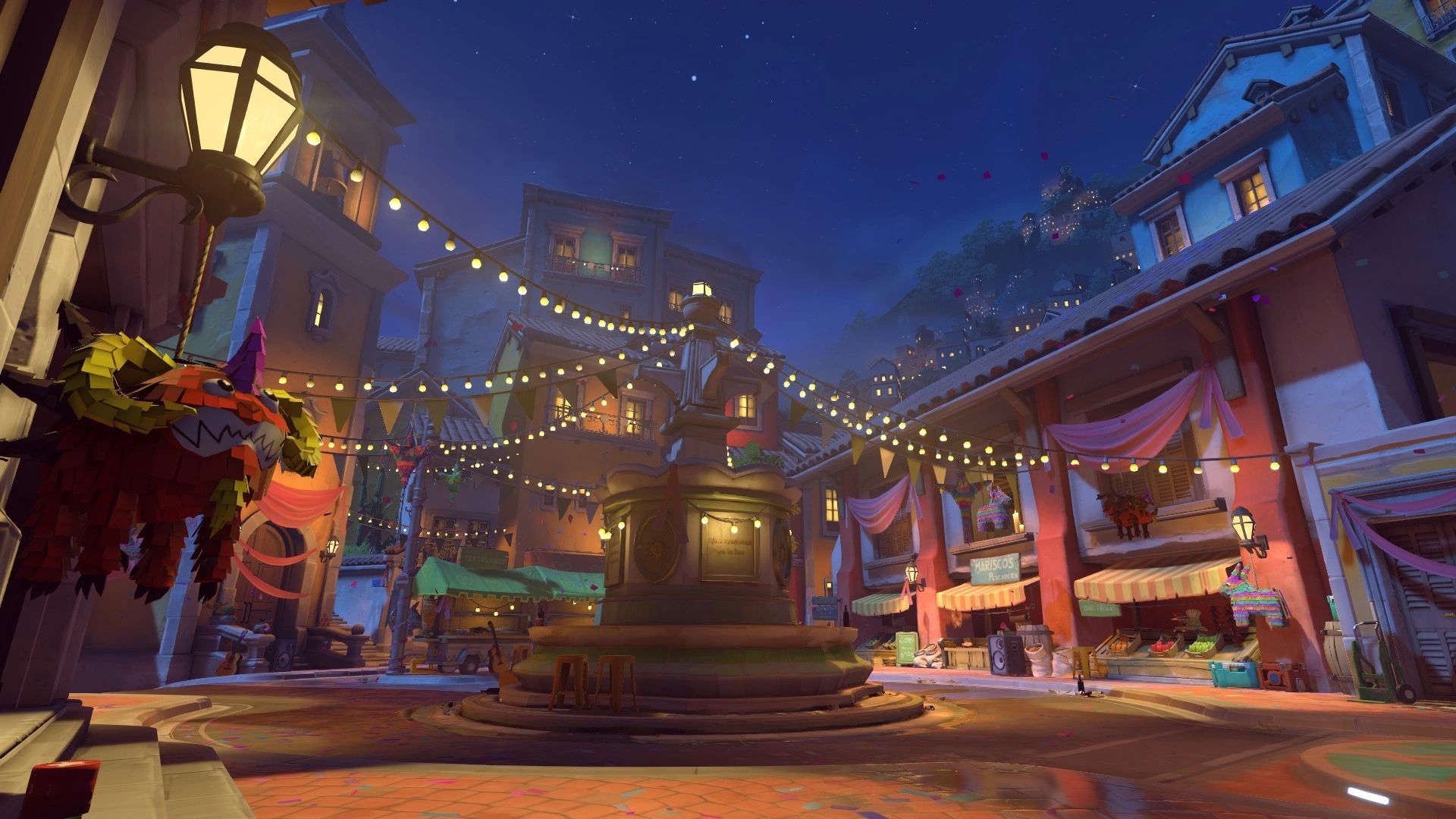
Overwatch 2 continues the legacy of its predecessor by offering an exhilarating multiplayer experience across a diverse array of maps. Each map belongs to specific game modes like Assault, Control, Escort, Push, and Flashpoint, with unique layouts and strategic elements.
Understanding the features and strategies of each map can give players an edge in battle. In this comprehensive guide, we'll break down all Overwatch 2 maps by mode, highlight key features, and offer tips for dominating each one.
Overwatch 2 Game Modes and Maps
Overwatch 2 has refined and expanded upon the core game modes from the original game, with some new additions, such as Push and Flashpoint. Each mode challenges players in different ways, requiring diverse tactics and team coordination. Here’s an overview of the different types of maps and the strategies for each mode.
Overwatch 2 Map Types
Before getting into specifics, here's a breakdown of the map types in Overwatch 2:
- Assault Maps: Teams take turns capturing or defending control points.
- Control Maps: Teams battle over a single point in a best-of-three format, fighting for control.
- Escort Maps: One team escorts a payload, while the other defends against it.
- Hybrid Maps: Combines Assault and Escort, where teams first capture a point and then escort a payload.
- Push Maps: A new mode where teams push a robot along a path.
- Flashpoint Maps: A recent addition, teams fight for control over multiple rotating objectives.
- Specialty Maps: Maps for specific modes like Deathmatch, Elimination, and Capture the Flag.

Overwatch Assault Maps (Legacy Content)
Assault maps were a staple in the original Overwatch, but are no longer featured in the competitive or quick play rotations of Overwatch 2. However, they may still be available in custom games and arcade modes.
On Assault maps, teams alternate between attacking and defending two static capture points (Point A and Point B). The attacking team must capture these points sequentially, while the defending team tries to stop them before the timer runs out.
Examples of Assault maps (from Overwatch 1):
- Hanamura: A Japanese-themed map, requiring teams to navigate tight chokepoints to capture the objective.
- Horizon Lunar Colony: Set on the moon, this map presented both long sightlines and cramped indoor fights.
- Paris: This map favored long-range engagements and strategic positioning with multiple flanking routes.
- Temple of Anubis: Set in an Egyptian temple, with narrow corridors and elevated defense positions.
- Volskaya Industries: A snow-covered industrial complex in Russia with indoor and outdoor combat zones.
While these maps are no longer in standard play, their strategic dynamics helped define many early Overwatch metas.


Overwatch Control Maps (King of the Hill)
Control maps are simple, yet intense, where both teams fight to control a single capture point. Each round consists of multiple stages, and the first team to win two rounds secures victory. These maps feature a symmetrical layout, meaning both teams have an equal distance to the point.
Key Control maps in Overwatch 2:
- Antarctic Peninsula (Icebreaker, Labs, Sublevel): Set in a frozen environment, the map offers high ground for defensive plays, with Icebreaker favoring flanking routes.
- Busan (Downtown, Sanctuary, MEKA Base): A map with three different styles—urban combat in Downtown, wide-open space in Sanctuary, and enclosed MEKA Base corridors.
- Ilios (Lighthouse, Ruins, Well): Set in a picturesque Greek island, where the Well point is infamous for environmental kills.
- Lijiang Tower (Garden, Night Market, Control Center): An urban Chinese city, with the Garden offering verticality, while the Control Center focuses on tight close-quarter combat.
- Nepal (Village, Shrine, Sanctum): Set in the Himalayas, Sanctum includes a deadly environmental hazard with a large pit in the center.
- Oasis (City Center, Gardens, University): A futuristic desert city with jump pads and vertical plays in the Gardens.
- Samoa (Beach, Downtown, Volcano): This Pacific island map has diverse environments, with the Volcano area offering dangerous lava hazards.
Strategy tip for Control maps: Since the action revolves around a single point, mobility, and sustainability are crucial. Heroes with strong area denial, like Mei, Symmetra, or Winston, can control the point effectively.

Overwatch Escort Maps (Payload Maps)
Escort, also known as payload maps, is a mode where the attacking team pushes a payload along a set path, while the defending team tries to stop them. These maps often feature long sightlines and diverse choke points, making both positioning and hero selection key to success.
Top Escort maps in Overwatch 2:
- Circuit Royal: A night-time Monaco-inspired map with steep inclines and tight curves, perfect for sniper plays.
- Dorado: Set in a vibrant Mexican city, this map has a mix of open spaces and tight indoor areas.
- Havana: Features long straightaways and open courtyards, ideal for hitscan heroes to thrive.
- Junkertown: A Mad Max-style wasteland with wide-open spaces and narrow passages, encouraging flanking maneuvers.
- Rialto: A picturesque Venice map with bridges and canals, where controlling high ground is essential.
- Route 66: Set in the American Southwest, with canyons and gas stations for strategic battles.
- Shambali Monastery: An ancient Tibetan monastery, providing opportunities for vertical engagements.
- Watchpoint: Gibraltar: A space-launch facility with several vertical layers and long sniper-friendly sightlines.
Escort map strategy: Control of the high ground is crucial, especially for defenders. Heroes like D.Va, Winston, or Widowmaker can secure these spots to pressure attackers.

Overwatch Push Maps
The Push maps were introduced in Overwatch 2 as part of a new game mode. In this mode, both teams battle to take control of a robot that moves a barricade along a set path. The team that pushes the barricade the furthest within the time limit wins.
Top Push maps:
- Colosseo: Set in Rome, Colosseo offers a blend of wide-open streets and narrow corridors. Teams must maintain control of the central area to keep momentum with the robot.
- New Queen Street: Set in a futuristic Toronto, this map features tight alleys and towering structures. The robot’s path weaves through the streets, requiring teams to stay flexible and adjust to shifting choke points.
- Esperança: A beautifully designed map based in Lisbon, Portugal, with a winding path that features distinct uphill and downhill areas. Positioning and flanking are key to success on Esperança.
Push map strategy: Maintaining constant pressure on the robot is essential. Teams must coordinate to push together, as losing control of the robot even briefly can cause significant setbacks.


Flashpoint Maps Overwatch
Flashpoint maps are a brand-new addition to "Overwatch 2," offering a different objective-based gameplay experience. In this mode, teams fight to control randomly activated capture points (flashpoints). Once a flashpoint is captured, the next one activates elsewhere on the map, forcing teams to quickly reposition and strategize.
Flashpoint maps:
- Suravasa: A vibrant map set in a jungle temple setting, Suravasa has multiple open areas and vertical elements. It demands a blend of team mobility and coordination to secure each flashpoint.
- New Junk City: A gritty map based in Junkertown, New Junk City offers a chaotic battleground with narrow alleyways and destructible environments. It’s ideal for heroes that thrive in scrappy, unpredictable fights, like Junkrat or Reaper.
Flashpoint strategy: Flexibility and quick rotations are vital. Heroes with mobility abilities, such as Tracer or Lucio, can make a big impact by helping the team quickly move from one flashpoint to the next.

Hybrid Maps
Hybrid maps blend Assault and Escort objectives. The attacking team must first capture a point before escorting the payload.
- Blizzard World: A theme park celebrating Blizzard games, with wide-open spaces and enclosed choke points.
- Eichenwalde: A ruined German castle, featuring tight corridors and high ground control points.
- Hollywood: A sunny map with a film studio setting, offering a mix of indoor and outdoor combat.
- King's Row: Set in a neo-Victorian London, one of the most popular maps with multiple chokepoints.
- Midtown: A New York-based map with urban streets and subway systems.
- Numbani: A futuristic African city with multiple flanking options.
- Paraiso: Set in a Brazilian coastal city, featuring both narrow alleyways and wide-open spaces.

Specialty Maps
Specialty maps are designed for modes like Capture the Flag, Deathmatch, and Elimination. These maps vary greatly in size and style.
Capture the Flag:
- Ayutthaya: Set in a stunning Thai temple, ideal for fast-paced Capture the Flag action.
Deathmatch:
- Château Guillard: A French mansion with both open courtyards and tight hallways.
- Kanezaka: A Japanese map featuring verticality and varied terrain.
- Malevento: Set in an Italian town with tight alleys and open courtyards.
- Petra: A desert map with large open spaces and dangerous cliffs.
Elimination:
- Black Forest: Set in a German woodland, focusing on cover and flanking.
- Castillo: A Mexican fort with vertical plays and narrow corridors.
- Ecopoint: Antarctica: A snowy research facility, ideal for close-quarters combat.
- Necropolis: A mysterious Egyptian desert map with multiple sightlines.


How Many Maps in Overwatch 2?
As of the latest update, Overwatch 2 includes over 30 maps, covering various game modes. With the introduction of new modes like Push and Flashpoint, the map pool continues to grow, offering players a dynamic and ever-changing gameplay experience.



No comments yet! Be the first one to react